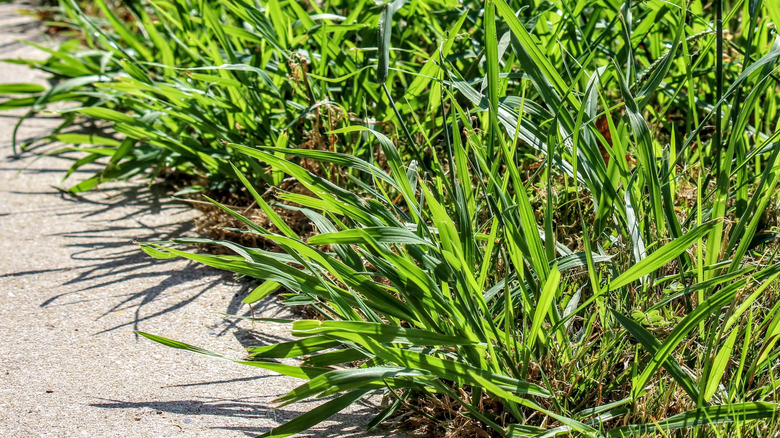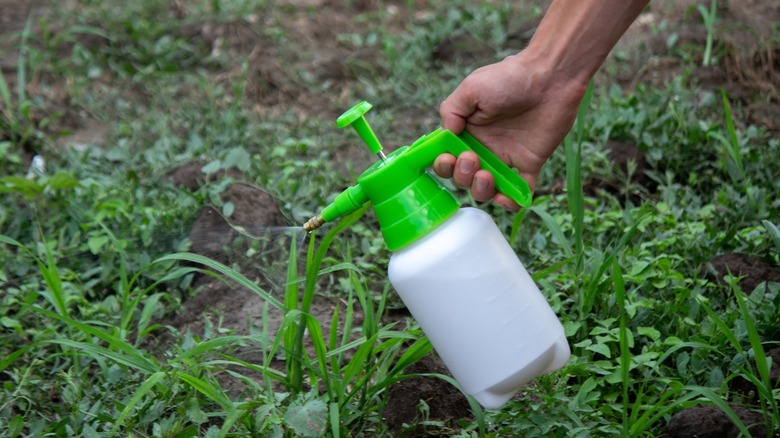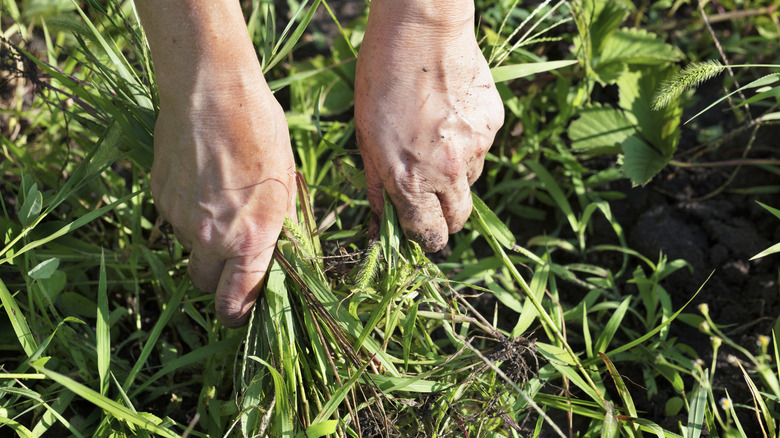Destroy Pesky Crabgrass With One Practical Product You Already Own
When it comes to our quest to have beautiful gardens and well-manicured lawns, weeds lead the pack of pesky invaders. And among these, crabgrass remains a persistent headache for gardeners. A prolific and aggressive weed, crabgrass not only competes fiercely for resources with your cherished plants but also disrupts the aesthetic harmony of your lawn. Its rapid growth and seeding make it a formidable adversary, spreading its roots and taking over the green expanse you've worked so hard to cultivate. Fortunately, a solution may already be in your medicine cabinet: rubbing alcohol.
The damage caused by crabgrass is not just aesthetic; it can compromise the health of your garden by robbing other plants of sunlight, water, and nutrients. As it flourishes, it crowds out and literally chokes the life from your beloved grass and plants. With rubbing alcohol on hand, however, you have a potent weapon in the fight against crabgrass.
Using rubbing alcohol to eliminate crabgrass
Harnessing the power of rubbing alcohol to kill crabgrass is simple and cost-effective. Mix 2 tablespoons of rubbing alcohol and a quart of water in a spray bottle and apply the solution directly on the crabgrass, ensuring thorough coverage. Alternatively, you may also moisten some cotton balls or a piece of clean rag with pure rubbing alcohol and apply it directly on the weeds. For optimum results, implement these methods on a bright, sunny day. According to Sciencing, the effects of alcohol on plants — whether it be ethanol or rubbing alcohol — are quite similar. A lower concentration of 5% works by stunting plant growth while a concentration of 25% or more can lead to severe damage and eventual demise. Per Treehugger, rubbing alcohol can dry out and kill plants.
It's best to use the alcohol spray on crabgrass on a calm day where there's no breeze to carry the droplets to nearby beneficial or desirable plants. Exercise caution during application by wearing protective gear, including gloves and eye protection, to safeguard yourself. Also, avoid using the solution around kids and pets to prevent accidental ingestion.
Preventing crabgrass resurgence
While you always want to eradicate existing crabgrass, it's equally important to prevent its return. Ensuring your lawn is well-fed with balanced nutrients and appropriately watered creates an environment less conducive to crabgrass growth. Regular mowing is a strategic maneuver to shade the soil, creating an inhospitable environment for crabgrass germination. Consider overseeding as a proactive measure, introducing desirable grass varieties that outcompete crabgrass for resources. This enhances the visual appeal of your lawn and reinforces its resilience against invasive species.
Maintaining a thick, lush lawn is the ultimate deterrent against future crabgrass invasions. The density of a healthy lawn leaves little room for crabgrass to establish itself, acting as a natural barrier. Another simple strategy is to pull out the weeds as they emerge, ensuring the entire root system is removed from the soil. Stay vigilant, regularly inspect your lawn for any signs of new weed growth, and address them promptly to preserve the beauty and health of your grass.


